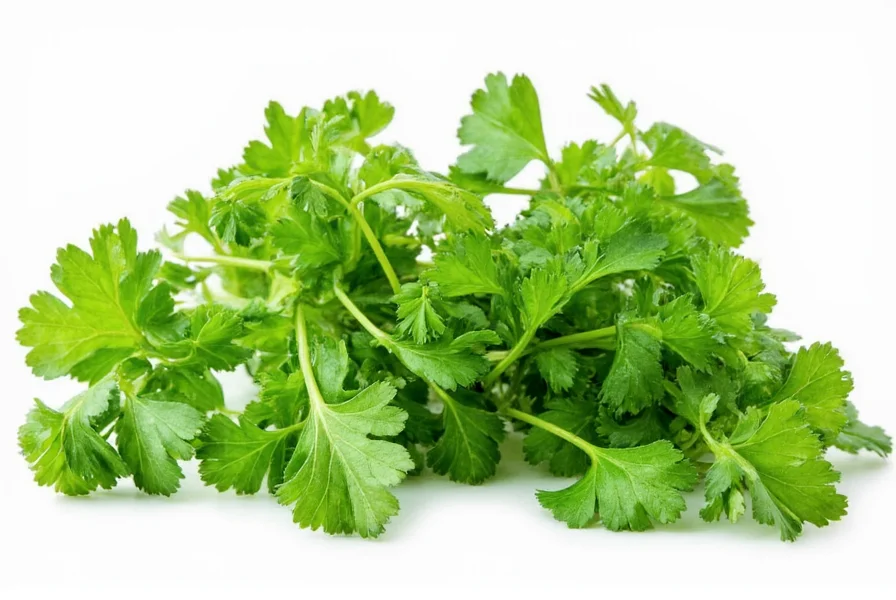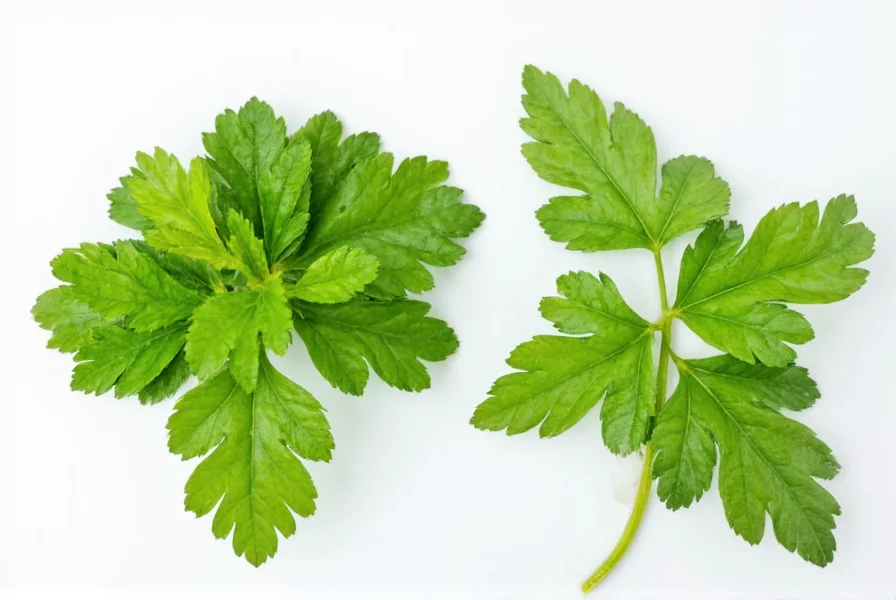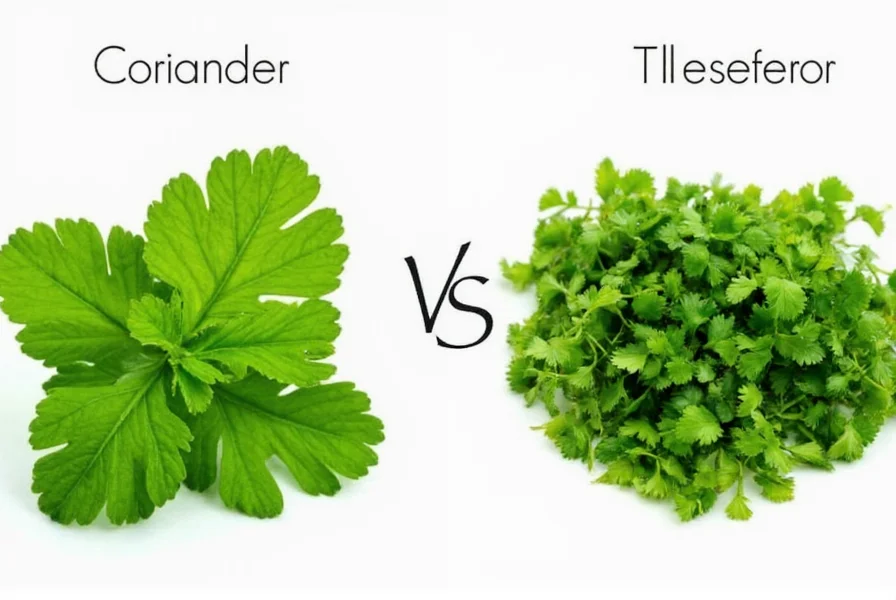When you're browsing recipes or standing in a grocery store, the terms coriander leaves and cilantro often cause confusion. Many home cooks wonder if they're dealing with two different herbs or if there's some subtle botanical distinction. The straightforward truth is that coriander leaves and cilantro refer to identical fresh green leaves from the Coriandrum sativum plant. This naming discrepancy stems entirely from linguistic and regional traditions rather than any actual difference in the herb.
The Origin of the Naming Confusion
The word "coriander" traces back to the ancient Greek term koriannon, which evolved through Latin (coriandrum) and Old French before entering English. In most parts of the world including the UK, Australia, India, and throughout Europe, the entire plant is called "coriander," with the seeds specifically referred to as "coriander seeds" and the fresh leaves as "coriander leaves" or simply "coriander."
"Cilantro," on the other hand, comes from the Spanish word for the same plant. In the United States, Canada, and many Latin American countries, the fresh leaves are called "cilantro" to distinguish them from the dried seeds, which are called "coriander." This linguistic distinction helps avoid confusion when following recipes that call for both components of the plant.
| Region | Term for Fresh Leaves | Term for Dried Seeds |
|---|---|---|
| United States & Canada | Cilantro | Coriander |
| United Kingdom & Europe | Coriander (leaves) | Coriander (seeds) |
| India & South Asia | Dhaniya (leaves) | Dhaniya (seeds) |
| Mexico & Latin America | Cilantro | Coriandro |
Botanical Identity: One Plant, Two Names
From a botanical perspective, there is zero difference between what some call coriander leaves and others call cilantro. Both terms refer to the fresh, lacy green leaves of Coriandrum sativum, an annual herb in the Apiaceae family. The plant produces both the aromatic leaves we're discussing and the small round seeds known as coriander seeds.
When exploring the difference between coriander leaves and cilantro in scientific literature, you'll find no distinction—the plant taxonomy recognizes only Coriandrum sativum. This explains why substituting cilantro for coriander leaves in recipes works perfectly; you're using the exact same ingredient regardless of what you call it.

Practical Implications for Cooking
Understanding the coriander vs cilantro naming convention prevents recipe confusion. When a British cookbook calls for "chopped coriander," it means the fresh leaves. When an American recipe specifies "cilantro," it's referring to those same vibrant green leaves. The key is recognizing which part of the plant the recipe intends—fresh leaves or dried seeds.
For international cooks navigating regional terminology differences, here's what matters most:
- When a recipe mentions "coriander" without specification in British or Indian contexts, it usually means the fresh leaves
- When a recipe specifies "coriander seeds", it always means the dried seeds regardless of region
- In American recipes, "cilantro" specifically means the fresh leaves, while "coriander" refers to the seeds
This distinction becomes particularly important when adapting recipes across cultural boundaries. Many cooks have accidentally used coriander seeds when a recipe called for fresh coriander leaves simply because they didn't understand the regional naming conventions.
Why the Confusion Persists
The ongoing confusion between coriander leaves vs cilantro stems from globalization and the internet. As recipes travel across borders digitally, the regional terminology doesn't always translate clearly. Food bloggers might use their local terms without realizing the potential for misunderstanding among international readers.
When examining why are coriander leaves called cilantro in some places, the answer lies in linguistic evolution. Spanish-speaking regions adopted "cilantro" from the Latin "coriandrum," while English-speaking regions outside North America retained the original "coriander" for both leaves and seeds, relying on context to distinguish between them.

Navigating Recipe Terminology Successfully
To avoid mistakes when using recipes from different regions, consider these practical tips for understanding coriander vs cilantro in recipes:
- Check the recipe origin - British recipes likely use "coriander" for leaves, while American recipes use "cilantro"
- Look for contextual clues - If the recipe mentions "fresh" or "chopped," it's almost certainly referring to the leaves
- Consider the dish type - Mexican, Thai, and Indian cuisines typically use the fresh leaves prominently
- When in doubt, check multiple sources - Compare how similar recipes describe the ingredient
Understanding the regional usage of coriander herb terms helps prevent culinary mishaps. Whether you're following a traditional Indian curry recipe that calls for "dhaniya" or a Mexican salsa recipe specifying "cilantro," you're working with the same vibrant, citrusy herb that adds distinctive flavor to dishes worldwide.
Frequently Asked Questions
Can I substitute cilantro for coriander leaves in recipes?
Yes, you can always substitute cilantro for coriander leaves because they are the exact same herb. The substitution works perfectly in all recipes since there is no botanical difference between them—only a difference in regional naming conventions.
Why do Americans call it cilantro while others call it coriander?
Americans adopted the Spanish term "cilantro" specifically for the fresh leaves to distinguish them from the dried seeds (called "coriander"). Most other English-speaking countries use "coriander" for both the plant and its seeds, relying on context to indicate whether the fresh leaves or dried seeds are meant.
Is there any taste difference between coriander leaves and cilantro?
No, there is absolutely no taste difference because they are the same plant part. The fresh leaves have a distinctive citrusy, slightly peppery flavor that some describe as soapy (due to a genetic predisposition). Whether you call them coriander leaves or cilantro, the flavor profile remains identical.
Can I use coriander seeds instead of cilantro in a recipe?
No, coriander seeds and cilantro (fresh leaves) have completely different flavors and uses. Coriander seeds have a warm, citrusy, slightly sweet flavor when ground, while fresh cilantro/coriander leaves have a bright, citrusy, herbal flavor. They are not interchangeable in recipes as they serve different culinary purposes.
What's the best way to store fresh cilantro/coriander leaves?
The best storage method involves treating cilantro like cut flowers. Trim the stems, place in a glass with an inch of water, cover loosely with a plastic bag, and refrigerate. Change the water every few days. This method typically keeps fresh coriander leaves viable for 1-2 weeks, significantly longer than storing them loose in a plastic bag.











 浙公网安备
33010002000092号
浙公网安备
33010002000092号 浙B2-20120091-4
浙B2-20120091-4